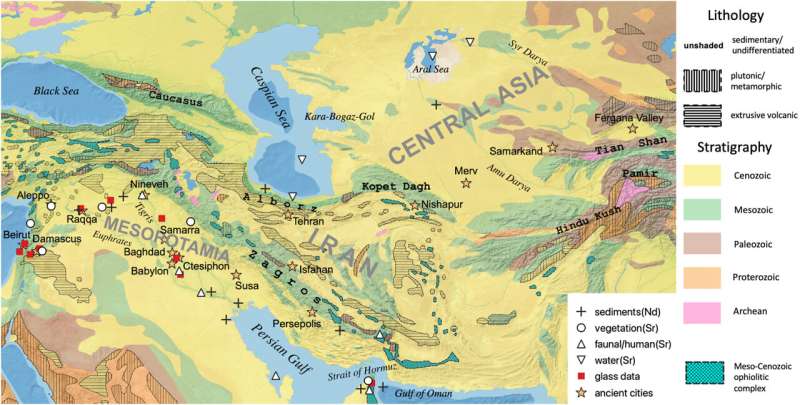Sr-Nd isotope baseline in Silk Road regions enables archaeological plant-ash glass provenance

Recently, Associate Professor LV Qinqin from the University of Science and Technology of China (USTC) of the Chinese Academy of Sciences (CAS), constructed the first largescale, semi-quantitative Sr-Nd isotope baseline for the vast Silk Road regions, and validated its application in plant-ash glass provenance. The study was published in Journal of Archaeological Science.
Archaeologists frequently utilize radiogenic Sr and Nd as isotopic tools where the baseline determination is in indispensable need. In many Silk Road regions, the construction of Sr-Nd baseline is blocked by severe deficiency of available data.
LV and collaborators investigated the bioavailable Sr and detrital Nd signatures along the Silk Road. They divided these regions into several major isotopic zones and proposed the likely isotopic compositional ranges of each zone, which eventually constituted the general Sr-Nd isotope baseline framework.
To validate the benefits of the Sr-Nd isotope baseline, researchers applied it into two provenance cases of plant-ash glass. Using the integrative Sr-Nd isotope approach, they discovered that northern Mesopotamia supplied raw materials for glass-making for a long period. In addition, they found that plant-ash glass has multiple origins including Central Asia and Mesopotamia. The two cases further confirmed the huge potential of Sr-Nd analyses in archaeology.
This progress supplements the lack of reference isotope baseline, and provides guidance for the future refinement. This study reveals the circulation pattern of Islamic plant-ash glass and its raw material sources, thus contributing to the research on cultural communications through ancient glass and ceramics in Silk Road regions.
More information: Qin-Qin Lü et al, A large-scale Sr and Nd isotope baseline for archaeological provenance in Silk Road regions and its application to plant-ash glass, Journal of Archaeological Science (2022). DOI: 10.1016/j.jas.2022.105695
Journal information: Journal of Archaeological Science
Provided by Chinese Academy of Sciences





















